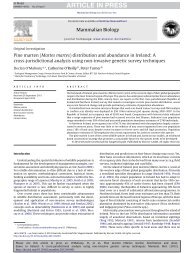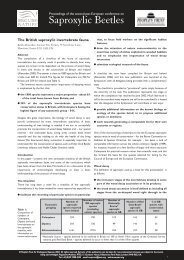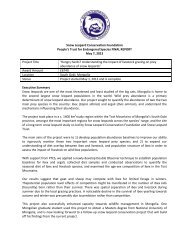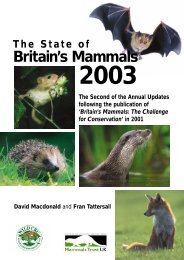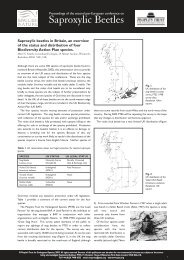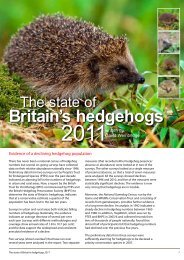Conservation Education to Save the Endangered Persian Leopard
Conservation Education to Save the Endangered Persian Leopard
Conservation Education to Save the Endangered Persian Leopard
You also want an ePaper? Increase the reach of your titles
YUMPU automatically turns print PDFs into web optimized ePapers that Google loves.
<strong>Conservation</strong> <strong>Education</strong> <strong>to</strong> <strong>Save</strong> <strong>the</strong> <strong>Endangered</strong> <strong>Persian</strong> <strong>Leopard</strong> in Iran<br />
15<br />
Objective 5: Empowering local experts and game wardens<br />
Despite of being a charismatic species, but <strong>the</strong> leopard is surprisingly less-known among<br />
experts and game wardens who are expected <strong>to</strong> protected this species as well as<br />
biodiversity. In preliminary assessment, it was concluded that <strong>the</strong>y do not have a<br />
comprehensive perception about <strong>the</strong> animal, its ecology and needs for survival.<br />
Terri<strong>to</strong>riality, population dynamics and ranging activities are <strong>the</strong> main scientific drawbacks<br />
of <strong>the</strong> game wardens and experts which motivate <strong>the</strong>m <strong>to</strong> suppose that <strong>the</strong>ir habitats<br />
sustain high densities of <strong>the</strong> leopards with small home ranges even when prey has depleted<br />
drastically. Also, general belief among expert is that since <strong>the</strong> leopard is seen more regularly<br />
in recent years, so <strong>the</strong>ir population has increased. As a result, <strong>the</strong>y declare that hunting<br />
permission can be issued for <strong>the</strong> leopards in some areas. However, our field studies have<br />
shown that prey scarcity has made <strong>the</strong> leopards <strong>to</strong> roam much more around human<br />
settlements which mean more chance of encounter, not more population density.<br />
Accordingly, in order <strong>to</strong> share <strong>the</strong> latest scientific knowledge on <strong>the</strong> leopards in Iran and<br />
abroad, <strong>the</strong>se workshops. During this project, a <strong>to</strong>tal of 15 workshops were held for experts<br />
and game wardens across <strong>the</strong> country with following details:<br />
Workshop No.1<br />
Workshop Title<br />
Ecology and Status of <strong>Persian</strong> <strong>Leopard</strong> in Iran<br />
Date: July 2009<br />
Location:<br />
Lorestan Department of Environment<br />
Audience:<br />
Experts<br />
Workshop No.2<br />
Workshop Title<br />
Ecology and Status of <strong>Persian</strong> <strong>Leopard</strong> in Iran<br />
Date: September 2009<br />
Location:<br />
Zanjan Department of Environment<br />
Audience:<br />
Experts<br />
Workshop No.3<br />
Workshop Title<br />
Ecology and Status of <strong>Persian</strong> <strong>Leopard</strong> in Iran<br />
Date: June 2010<br />
Location:<br />
Esfahan Department of Environment<br />
Audience:<br />
Experts<br />
www.wildlife.ir





